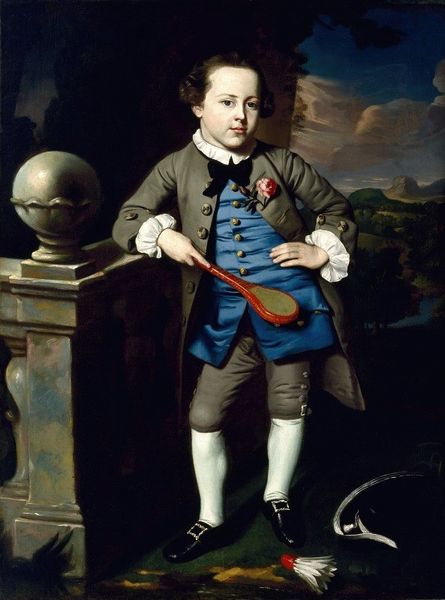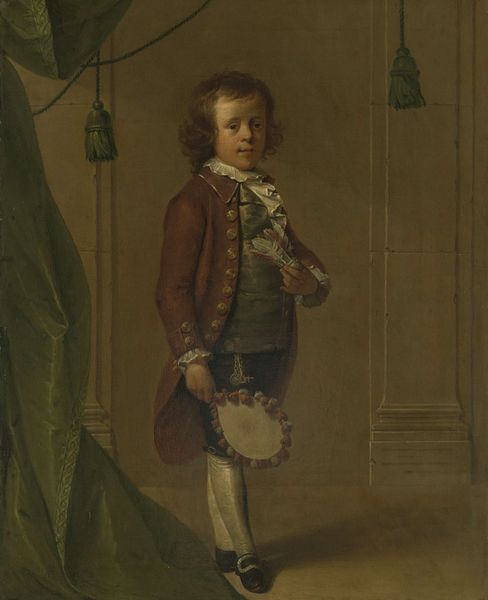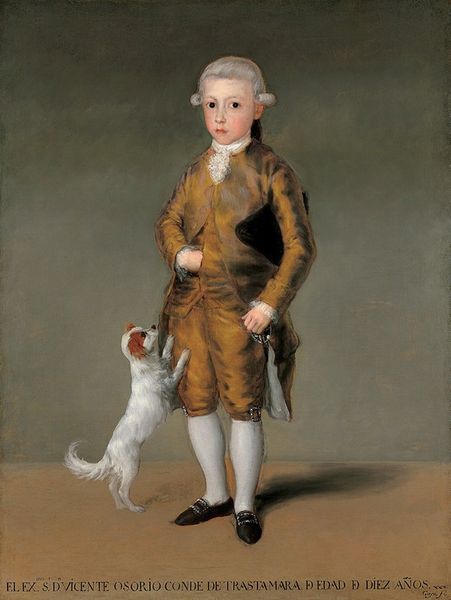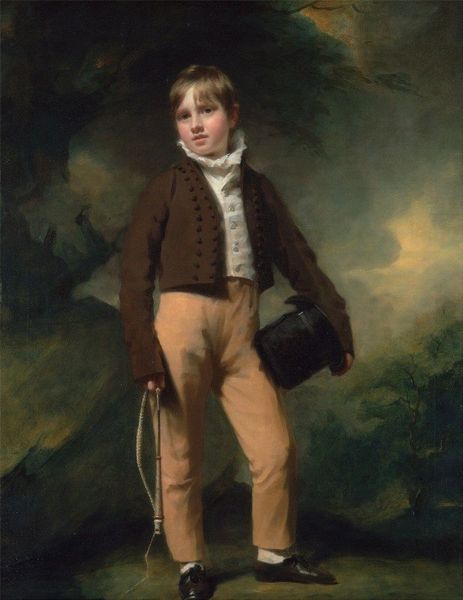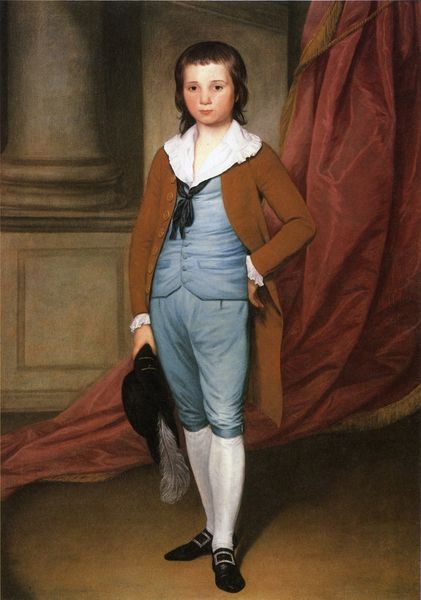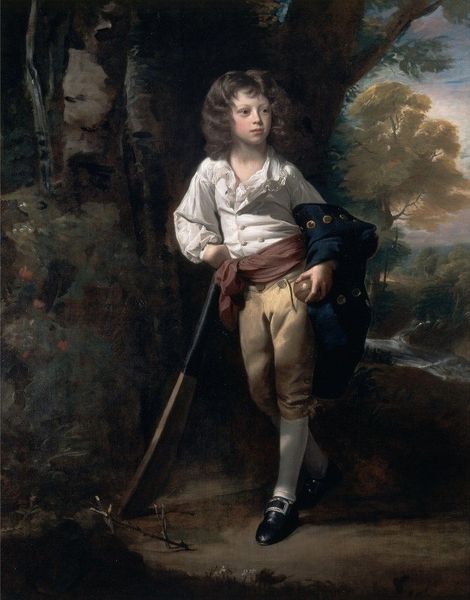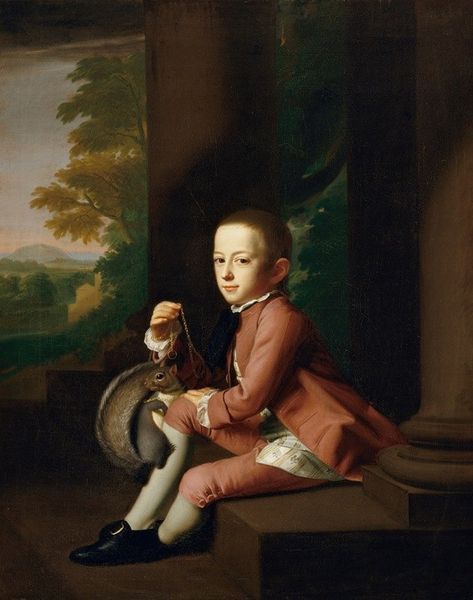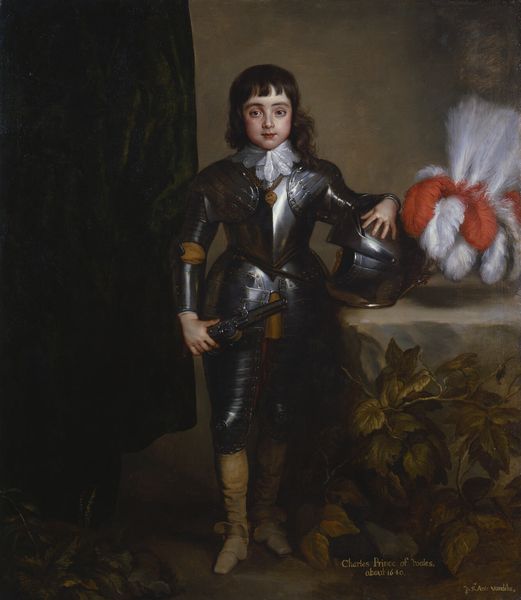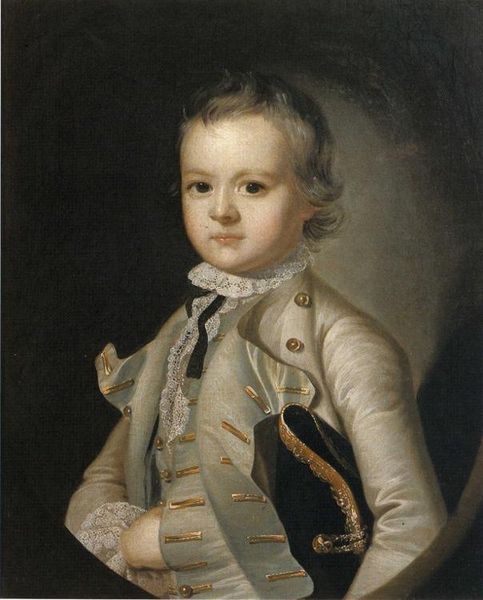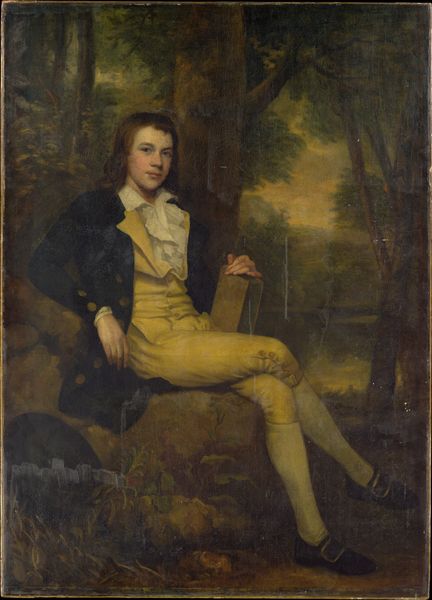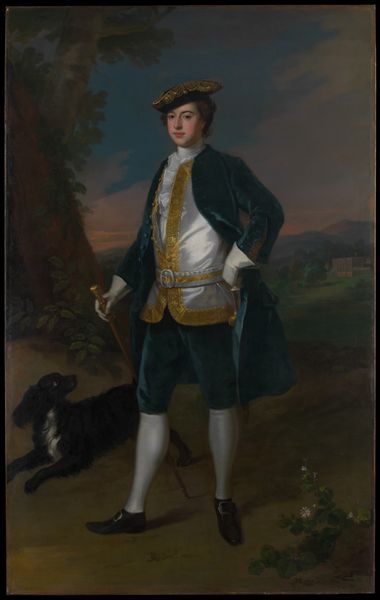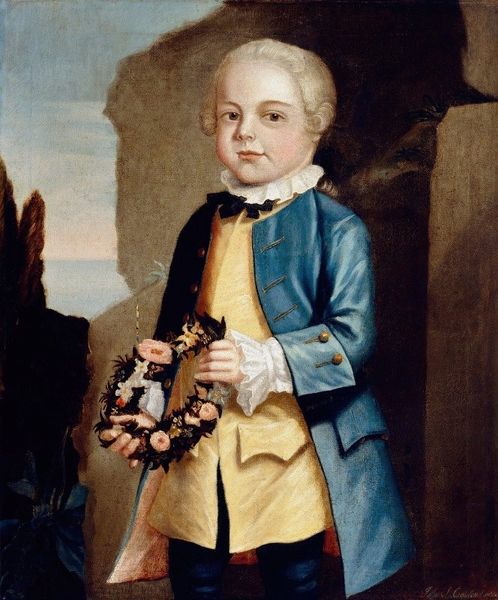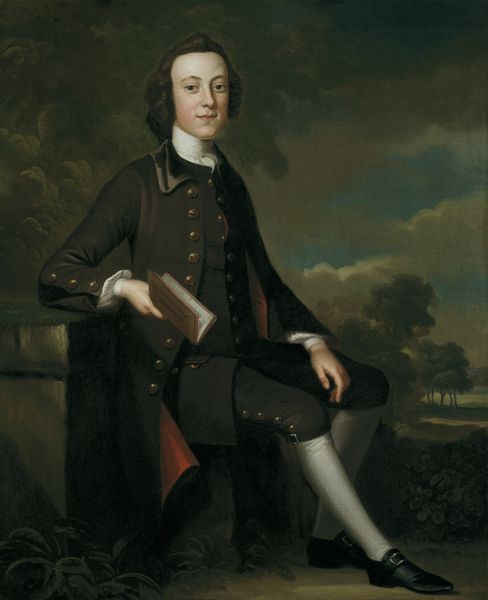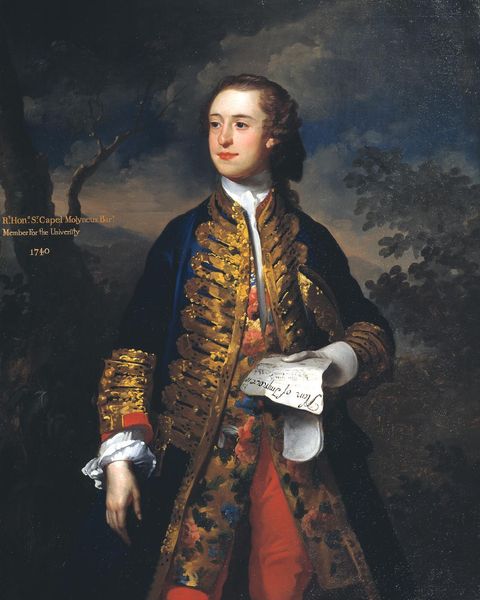
Copyright: Public domain
Editor: Here we have George Stubbs's "Portrait of John Nelthorpe as a child", created around 1775 using oil paints. It's quite a formal depiction, and the materiality of the fabrics in his clothes stands out to me. What's your take on this piece? Curator: Look closely at the materiality – the textures, the sheen of the silk, the weight of the woolen cloth. Consider the labor involved in creating such garments. Who made these clothes? What were their lives like? Editor: I hadn't thought about it like that. The focus is so much on the sitter. So you are suggesting that we consider the unseen makers behind these luxury goods, and their role in producing this image? Curator: Precisely. This portrait isn’t just about John Nelthorpe; it’s about the economic system that allowed for such display. Reflect on where Stubbs might have sourced his materials; the pigments, the canvas. Consider the colonial trade routes, the global network that fuelled this artistic production. Editor: That brings a new level of meaning to the portrait. The wealth isn’t just inherited, it is produced. How did Stubbs’s painting techniques emphasize these aspects of material culture? Curator: Stubbs meticulously rendered the textures and details. Think about the precise brushwork, the layering of paint to create the illusion of depth and substance. This labor-intensive process mirrors the labor invested in producing the very objects he depicts, elevating them, in a way. Editor: I see. It really changes how you view the painting – it's less about the individual and more about the system behind them. I’ll never look at a portrait the same way. Curator: Indeed. Material analysis pushes us to consider art not as isolated objects of beauty, but as products embedded in social, economic, and material relations.
Comments
No comments
Be the first to comment and join the conversation on the ultimate creative platform.
